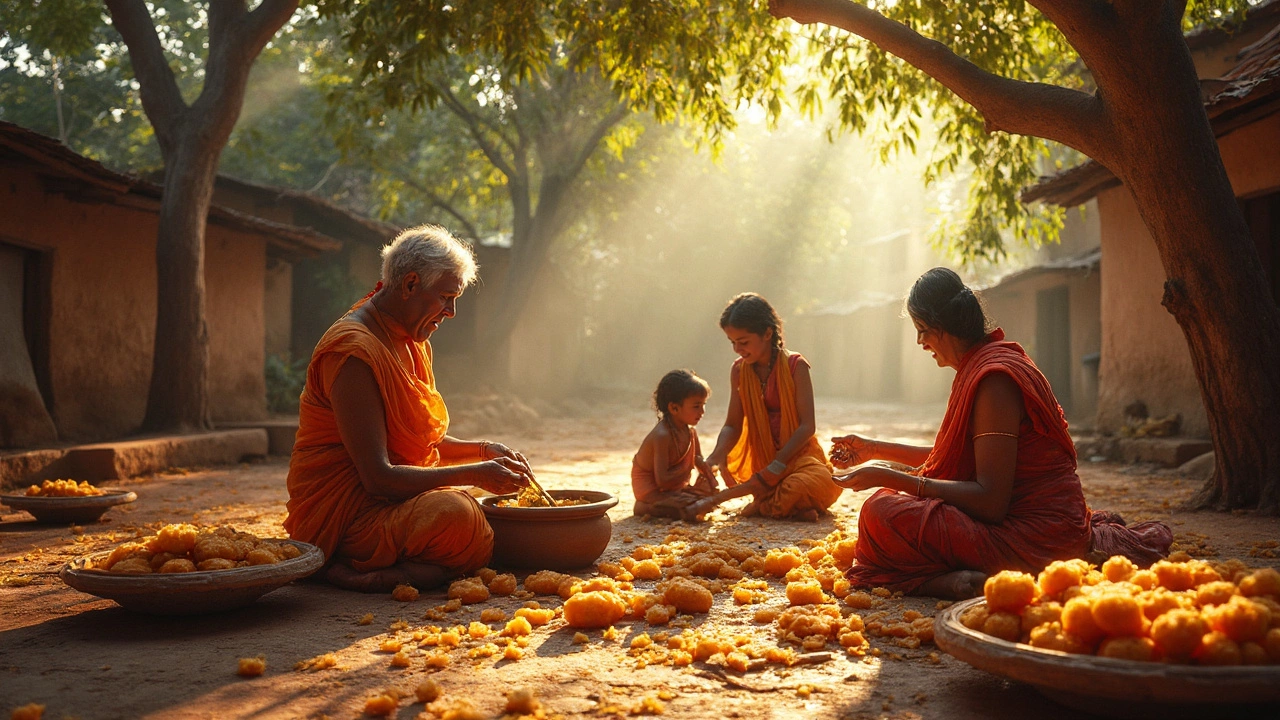Indian Mithai: Sweet Traditions, Modern Twists, and Healthier Choices
If you grew up with a plate of gulab jamun or jalebi, you know Indian mithai isn’t just a dessert – it’s a memory. From festive celebrations to everyday tea time, these sweets are woven into the fabric of Indian life. But today you don’t have to choose between flavor and health. With a few smart swaps and some kitchen know‑how, you can enjoy mithai without the guilt.
Healthier Choices for Sweet Cravings
The biggest myth is that all Indian sweets are loaded with sugar and bad fats. In reality, many traditional recipes rely on natural sweeteners like jaggery, coconut sugar, or dates. Our post “Which Indian Sweet Is Healthy? Best Choices, Portions, and Smart Swaps” breaks down the top low‑sugar options – think ragi laddu made with millets, or tavukara halwa sweetened with grated coconut and a drizzle of honey. Portion control matters too; a single piece of burfi (about 20 g) satisfies the sweet tooth without spiking calories.
When you’re cooking at home, swap refined flour for whole‑grain alternatives. A simple switch to almond or chickpea flour in besan laddus boosts protein and adds a nutty depth. If you’re watching carbs, try kesar badam barfi – a blend of almond flour, saffron, and a splash of low‑fat milk. These tweaks keep the traditional taste while adding nutrition.
Timeless Classics and Their Stories
Every mithai has a story. In “Ancient Indian Sweets: The Fascinating Origins of India's Oldest Mithai,” we travel back to the Vedic era to discover that kheer was originally a rice porridge offered to deities. Knowing the history makes each bite more meaningful. Similarly, “India's Most Popular Sweet: Why Gulab Jamun Rules Every Occasion” explains why this milk‑based dumpling became a party staple – it’s soft, spongy, and absorbs a fragrant sugar syrup that’s perfect for celebrations.
For those who love a quick sugar fix, our “What Is the Healthiest Junk Food? Smart Picks, Portions, and Swaps (2025 Guide)” includes a section on mithai‑inspired snack bars that combine dates, nuts, and a hint of cardamom. These bars give you that familiar flavor without the deep frying.
When you’re ready to experiment, try a modern spin like mango‑infused rasgulla or matcha‑tinted payasam. The key is to keep the base authentic – fresh paneer or thickened milk – and add the twist at the end. This approach respects tradition while keeping your palate excited.
Whether you’re searching for a guilt‑free treat, a recipe rooted in centuries of culture, or a quick sweet to pack in your bag, Indian mithai offers endless possibilities. Dive into our collection, pick a recipe that fits your lifestyle, and enjoy the sweet side of India without compromise.
Oldest Candy in India: Tracing the Sweet Roots of Indian Sweets
Ever wondered what counts as the oldest candy in India? This article digs into the ancient roots of Indian sweets, spotlighting jaggery-based treats and early sugarcraft. It unearths the story behind legendary sweets, explores why they've survived for centuries, and breaks down how these early candies were made at home. Expect taste, nostalgia, and a few surprising facts about India’s enduring sweet traditions.
